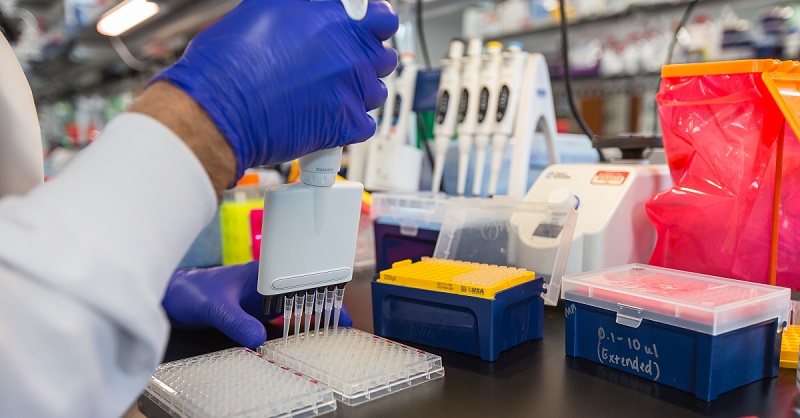Immunogenicity assessment equips us with important information on the safety and efficacy of a drug candidate for its intended patient population, and is needed to make pivotal decisions on whether to halt or progress a study through the clinical trial phases.
There are a number of factors that can skew immunogenicity testing results if the assays used are not developed to appropriately account for known issues with the compounds evaluated, and may leave promising drugs stalled out or shelved. This could have been the case for one Phase II study involving a monoclonal antibody (mAb) binding to a target protein which contained the dimerization interface – that is, until BioAgilytix stepped in.
A Program at Risk
The sponsor came to BioAgilytix after two prior attempts to develop a viable antidrug antibody (ADA) assay for its drug had failed. The first attempt had used a simple bridging assay which resulted in ADA prevalence of 80%. The second attempt could not achieve the level of sensitivity and drug tolerance needed to meet regulatory requirements. BioAgilytix was the sponsor’s last hope to get the study back on track, and we only had a month’s time to develop our method.
A Novel Solution for a Known Challenge
Soluble targets with the dimerization interface have the ability to bridge the labeled capture and detection drugs in the ADA assay system and may lead to false positive ADA results. Our team suspected target dimerization to be the reason for the high rate of immunogenicity seen in previous testing, and knew a creative method would be required to overcome target interference challenges.
The answer we landed on? Using heat treatment to minimize target interference combined with acid dissociation to improve drug tolerance. While heat treatment has been used in a number of different assays to minimize interference, this was the first it had been tested for a target dimerization issue.
The optimal time and temperature of sample treatment were determined in close collaboration with the sponsor. Target interference was tested by adding up to 2000 ng/mL of target in both monomer and dimer forms, with no interference observed. The heat-treated samples were also incorporated into an acid capture elution (ACE) method to achieve drug tolerance of at least 100 µg/mL in clinical samples, and the assay was able to detect ADAs at 100 ng/mL in the presence of greater than 100 µg/mL of added drug for multiple indications.
A Way Forward
Through this novel method and in less than 30 days, BioAgilytix was able to develop an ADA assay to the required levels of drug tolerance and sensitivity. The assay was then immediately qualified and validated for use in testing samples for several clinical studies, and the prevalence of immunogenicity was found to be closer to 5%–10%.
Our team’s scientific ingenuity brought a study back from the brink of cancellation and also now gives us a novel solution to address target interference in ADA assays used for other applications. In fact, we recently applied the same heat treatment method to a project involving the HER2 gene—a potential breast cancer indication. Once again, lower immunogenicity rates were observed with BioAgilytix’s assays in comparison with other programs involving HER2.
While this heat pre-treatment may not be ideal for all situations involving target interference, it is one example of the need to think creatively about new ways to address and overcome known assay challenges. For sponsors, this requires finding a partner with not only a deep understanding of the complex biology of antibody therapeutics, but also a willingness to flex that knowledge in innovative ways.
—
BioAgilytix is here to partner with you in your efforts to bring impactful novel drugs to market, and our team has extensive experience developing novel approaches to overcome complex bioanalytical challenges. Explore additional case studies to see this ingenuity first-hand, or speak to one of our scientists today about your study requirements.
